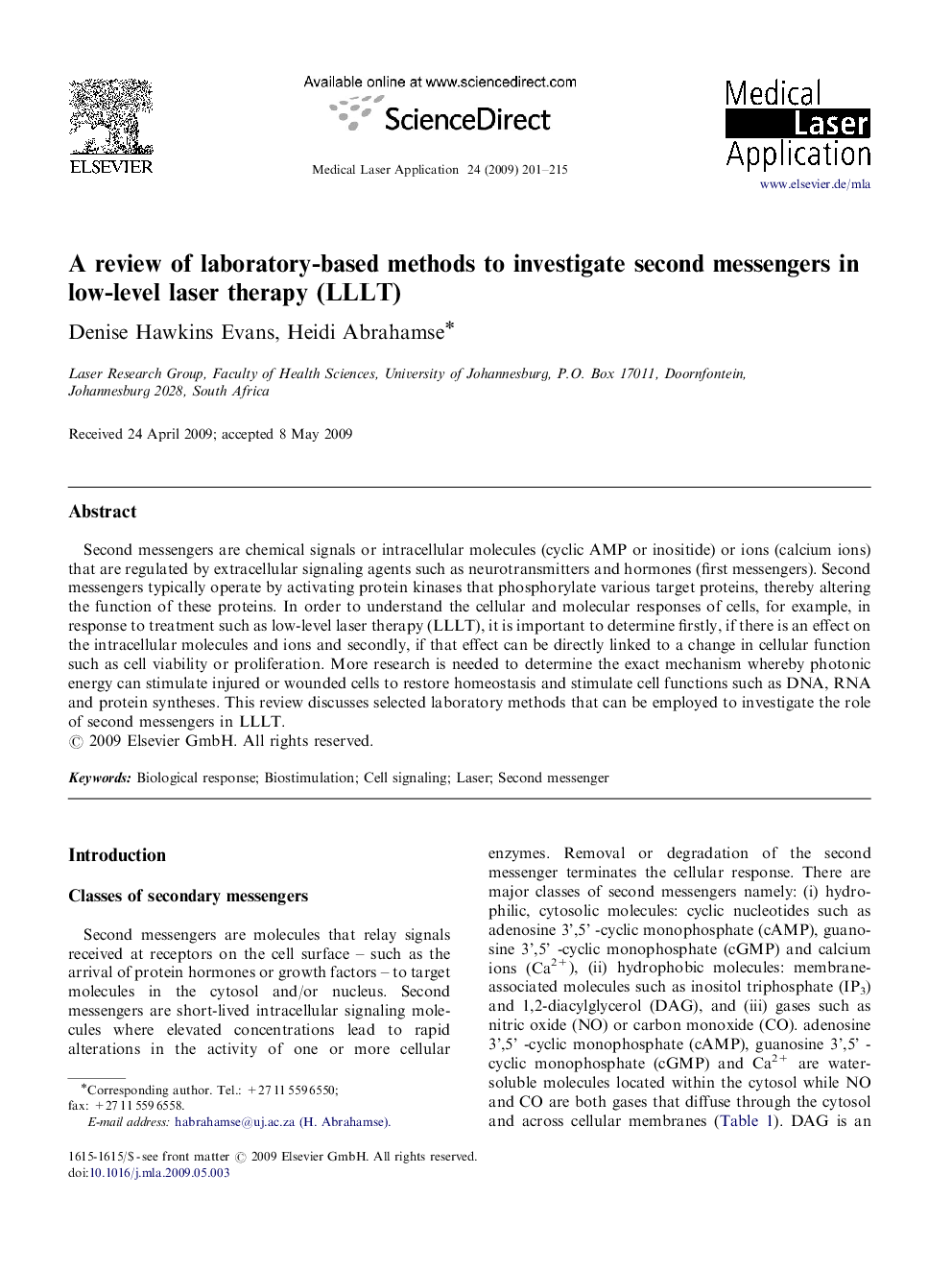| کد مقاله | کد نشریه | سال انتشار | مقاله انگلیسی | نسخه تمام متن |
|---|---|---|---|---|
| 2068268 | 1078292 | 2009 | 15 صفحه PDF | دانلود رایگان |

Second messengers are chemical signals or intracellular molecules (cyclic AMP or inositide) or ions (calcium ions) that are regulated by extracellular signaling agents such as neurotransmitters and hormones (first messengers). Second messengers typically operate by activating protein kinases that phosphorylate various target proteins, thereby altering the function of these proteins. In order to understand the cellular and molecular responses of cells, for example, in response to treatment such as low-level laser therapy (LLLT), it is important to determine firstly, if there is an effect on the intracellular molecules and ions and secondly, if that effect can be directly linked to a change in cellular function such as cell viability or proliferation. More research is needed to determine the exact mechanism whereby photonic energy can stimulate injured or wounded cells to restore homeostasis and stimulate cell functions such as DNA, RNA and protein syntheses. This review discusses selected laboratory methods that can be employed to investigate the role of second messengers in LLLT.
ZusammenfassungSekundäre Botenstoffe sind chemische Signale oder intrazelluläre Moleküle (z.B. zyklisches Adenosinmonophosphat (cAMP), Inosite) oder Ionen (z.B. Calcium-Ionen), die durch extrazelluläre Liganden (Signalstoffe) wie beispielsweise Neurotransmitter und Hormone (primäre Botenstoffe) reguliert werden können.Sekundäre Botenstoffe aktivieren typischerweise Proteinkinasen, was zur Phosphorylierung wichtiger Proteine führt und so spezifische Zellfunktionen anstößt. Um die zelluläre Wirkung der Laserstrahlung, z.B. bei der Low-Level-Lasertherapie (LLLT) zu verstehen, ist es besonders wichtig zunächst zu untersuchen, (1) ob ein Effekt auf die intrazellulären Moleküle und Ionen besteht und (2) ob dieser Effekt direkt mit einer Änderung der Zellfunktion, z.B. der Lebensfähigkeit oder der Proliferation von Zellen, verbunden ist.Weitere Forschungsarbeit ist nötig, um zu klären, durch welche Mechanismen eine niederenergetische Laserbestrahlung zur Regeneration geschädigter Zellen beispielsweise durch Stärkung der Homöostasis oder der Steigerung der DNA-/RNA-Synthese beiträgt. Der vorliegende Übersichtsartikel diskutiert ausgewählte Labormethoden, die zur Untersuchung von sekundären Botenstoffen, die bei der LLLT eine Rolle spielen, geeignet sind.
Journal: Medical Laser Application - Volume 24, Issue 3, August 2009, Pages 201–215